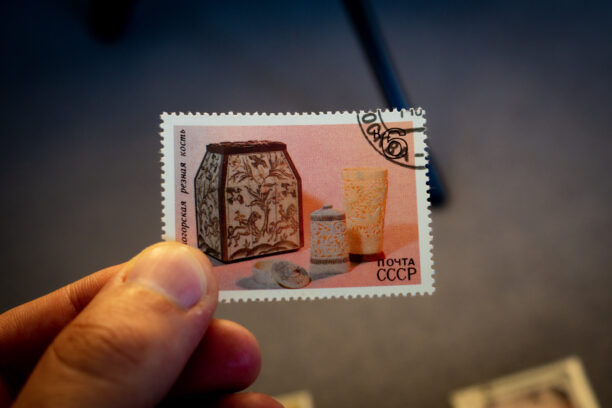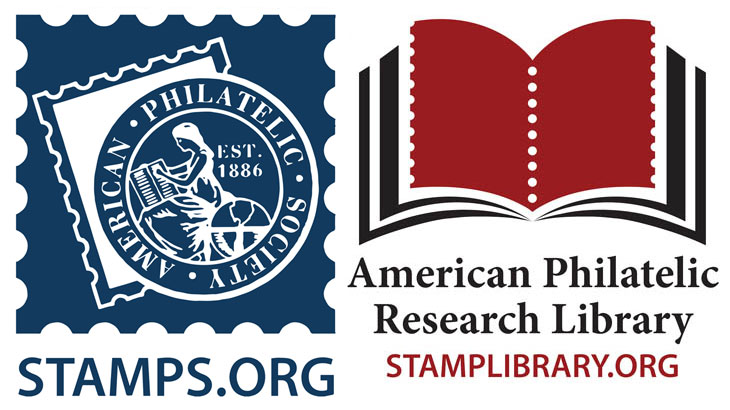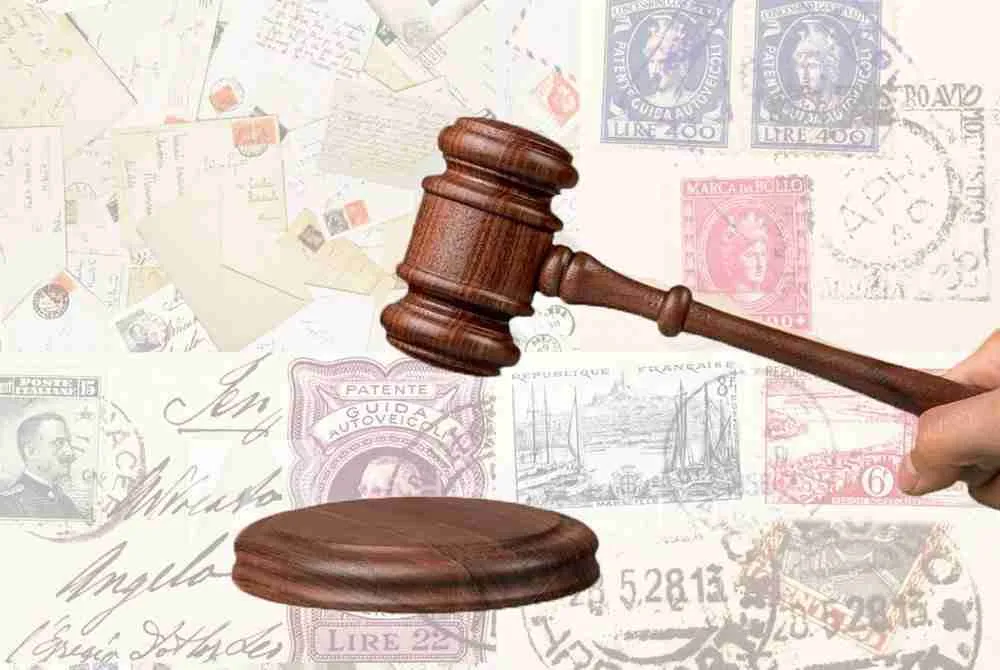Whether you’ve inherited a trove of old stamps, or you’ve spent years meticulously curating your own collection, understanding the worth of your stamps can be a complex but rewarding endeavor. A stamp collection may contain hidden gems that are of significant monetary value or simply pieces of incredible historical significance. Either way, stamp collection appraisal is an art that combines intricate knowledge of history, understanding of market trends, and an eye for detail. How to appraise your stamp collection? Before diving in, don’t miss our article for gold coin ring collectors.
An accurate appraisal of a stamp collection involves a meticulous process of evaluation based on factors like rarity, condition, historical significance, demand, and more. It is a task requiring a deep knowledge of philately, the study of stamps, and an understanding of the current stamp market. However, if you’re a novice or a seasoned collector interested in understanding the value of your collection, fear not. This guide will help you navigate the intricate world of stamp appraisal and provide you with the knowledge and tools necessary to gain a fair assessment of your collection’s worth.
To get the most out of this guide, you don’t need to be an experienced philatelist. Instead, bring your curiosity, attention to detail, and a passion for history and learning. With these traits at your side, you’ll soon gain a new understanding of your stamp collection and the fascinating stories it holds. So, let’s embark on this journey to discover the hidden value in your collection of miniature works of art.
How to Appraise your Stamp Collection
Here are some practical steps for appraising your stamp collection:
- Identify the Stamps: The first step is to identify the stamps in your collection. Look for any identifying features like the country of origin, the date of issue, and the stamp’s subject. This information will give you a starting point for your research.
- Check the Condition: The condition of the stamp plays a significant role in its value. Stamps that are in mint condition, meaning they have never been used, are usually worth more than used stamps. Look for any tears, creases, discoloration, or gum on the back of the stamp. Any of these can decrease the value.
- Research Stamp Catalogues: There are several comprehensive stamp catalogues available both online and in print. They include images, details about each stamp including the issue date and printing information, and estimated values. These catalogues, like the Scott Standard Postage Stamp Catalogue, are a great resource for comparing your stamps and getting a basic idea of their value.
- Consider the Rarity: The rarity of a stamp can significantly impact its value. Stamps that were issued in limited quantities or are from an unusual or obsolete post office are often more valuable. Errors in printing can also increase a stamp’s worth.
- Understand Market Demand: The value of stamps can fluctuate based on market demand. Some stamps might be more valuable because they are sought after by collectors. Researching recent stamp auctions and sales can help you understand what is currently popular and valuable in the market.
- Consult a Professional Appraiser: For valuable or complex collections, it’s wise to consult a professional appraiser. They have specialized knowledge and access to resources that can help provide a more accurate valuation. It’s essential to choose an appraiser who is reputable and has experience with stamps. Organizations like the American Philatelic Society can help you find qualified appraisers.
- Get a Second Opinion: If you have a particularly valuable collection, it might be worth getting a second opinion. Different appraisers might have slightly different areas of expertise or market insights, which can lead to variations in valuations.

Remember that while you can get a basic idea of your stamp collection’s worth on your own, a professional appraisal will usually provide the most accurate valuation. It’s also important to remember that the actual selling price of a stamp can often be lower than the appraised value due to factors such as market demand and the venue of sale. So, how to appraise a stamp collection?
Consult a Professional to Appraise your Stamp Collection
While it’s possible to conduct a basic appraisal of your stamp collection on your own, seeking the help of a professional appraiser can be immensely beneficial, particularly if your collection is extensive, includes rare stamps, or you’re considering selling it. A professional can help you navigate the intricate world of stamp valuation, offer detailed insights, and ultimately provide you with an accurate appraisal. Here’s how to go about it:
- Find a Reputable Appraiser: Your first step is to find a professional stamp appraiser. Look for someone with a solid reputation and demonstrable experience. Associations such as the American Philatelic Society (APS) and the American Society of Appraisers (ASA) have directories of certified professionals. Personal referrals can also be beneficial, especially from other stamp collectors or hobbyist groups.
- Verify Credentials: It’s important to verify the credentials of your chosen appraiser. Reputable appraisers will typically be certified by recognized philatelic organizations, demonstrating their expertise in this area. They should also abide by a code of ethics that ensures fair and accurate appraisals.
- Understand the Process: Before starting the appraisal, ensure you understand the process. A professional appraisal should include a thorough examination of each stamp in your collection, an assessment of condition and rarity, and market research to determine potential value. The appraiser should also provide a written report detailing their findings.
- Ask About Fees: Appraisers typically charge for their services, either on an hourly basis, a flat fee, or a percentage of the collection’s value. Be sure to discuss and agree upon the fee structure upfront to avoid surprises later.
- Prepare for the Appraisal: To make the process as smooth as possible, organize your collection neatly and have any information or documentation ready that could help the appraiser, like original purchase receipts or previous appraisals.
- Review the Appraisal: Once you receive the appraisal, take the time to review it thoroughly. It should provide a detailed description and value for each stamp or set in your collection. If you have any questions or concerns about the appraisal, don’t hesitate to discuss them with the appraiser.
- Consider a Second Opinion: If you’re not satisfied with the appraisal or if your collection is exceptionally valuable, it might be worth seeking a second opinion. This can provide a broader perspective on your collection’s worth.
Remember, while professional appraisals can provide an accurate valuation of your collection, the final selling price might differ based on various factors such as market demand, timing, and the chosen sales platform. The value provided in the appraisal is, therefore, an estimate and not a guaranteed price.
Examples of Professional Stamps Appraisers
Finding a reputable and professional stamp appraiser can be critical to getting an accurate valuation of your stamp collection. Here are a few examples of organizations and individual professionals who are well-established in this field:
- The American Philatelic Society (APS): While not an appraiser itself, the APS offers a directory of APS-accredited stamp dealers who may offer appraisal services. These professionals are bound by a code of ethics set by the APS, ensuring a high standard of professionalism and accuracy.
- The Philatelic Traders’ Society (PTS): Based in the United Kingdom, the PTS also provides a directory of reputable dealers and appraisers. Members of the PTS are required to adhere to a strict code of ethics, providing buyers and sellers with confidence in their dealings.
- Professional Stamp Experts (PSE): The PSE provides expert stamp certification and grading. Their professionals assess the condition and authenticity of stamps, offering a comprehensive understanding of their value.
- Individual Professional Appraisers: There are several well-known individual stamp appraisers, such as Richard Lehmann of StampFinder and Scott Murphy of Mystic Stamp Company. It’s important to verify their credentials and check for positive reviews or testimonials.
- Major Auction Houses: Well-established auction houses such as Sotheby’s and Christie’s often have experts on staff who can perform stamp appraisals, particularly for high-value or rare collections.

Remember to always verify the credentials and experience of any professional stamp appraiser before choosing to work with them. It’s also a good idea to clarify any fees or charges for their services upfront. Finally, it may be worthwhile to seek a second opinion if you have a particularly valuable collection. Now, how to appraise your stamp collection if you wanted to study the field yourself?
How to Study Stamps Appraising?
Diving into the world of stamp appraisal might seem daunting at first, but it is a rewarding endeavor that opens up the fascinating world of philately, or stamp collecting. If you’re looking to study and learn more about stamp appraisal, here are some steps to guide you:
- Start with Basics: Understanding the fundamentals of philately is essential. Learn about different types of stamps, their history, the significance of their designs, and the countries they originate from. Read books or online resources about stamp collecting, like “The World Encyclopedia of Stamps & Stamp Collecting” by James Mackay or the numerous resources available on the American Philatelic Society’s website.
- Understand Stamp Grading: Study the factors that determine a stamp’s condition, such as color, centering, perforation, gum condition, and any flaws or repairs. Recognizing these features can help you accurately grade and value stamps. The Scott Postage Stamp Catalogue is a useful resource for this.
- Know About Rarity and Demand: Learn how the rarity of a stamp and its demand in the market impact its value. Rare stamps, limited edition releases, error stamps, and stamps from discontinued post offices usually have higher values. Conversely, a stamp’s value may also depend on how many collectors are interested in it.
- Use Stamp Catalogues: Familiarize yourself with major stamp catalogues like the Scott Standard Postage Stamp Catalogue, Stanley Gibbons Catalogue, and Yvert et Tellier Catalogue. These are valuable resources for understanding the estimated value of different stamps and gaining insights into the vast world of philately.
- Join a Stamp Club or Society: Participating in a local or online stamp club can provide a wealth of knowledge. These clubs often have experienced members who are happy to share their insights. National organizations like the American Philatelic Society offer courses, seminars, and workshops that can deepen your understanding of stamp appraisal.
- Attend Stamp Shows and Auctions: Observing real-world transactions at stamp shows and auctions can provide a practical perspective on how stamps are appraised and traded. You’ll get an idea about current market trends, popular items, and how the bidding process works.
- Consider Formal Education: If you want to become a professional appraiser, you might want to consider formal training or education. The American Society of Appraisers, for example, offers a Personal Property Valuation program that includes a specialty in numismatics and philatelic materials.
- Practice Appraising: Start by appraising your own stamp collection or consider volunteering to appraise collections for friends or family. As with any skill, practice is key to becoming proficient in stamp appraisal.

Remember, studying stamp appraisal is not just about understanding the monetary value of stamps. It’s also about appreciating the cultural, historical, and artistic value these tiny pieces of paper hold. Good luck on your journey into the captivating world of stamp appraisal!
Conclusion
So, how to appraise your stamp collection? Whether you’re an avid philatelist or someone who has inherited a collection, understanding the worth of your stamps is an enriching and rewarding journey. It involves a fascinating exploration of history, craftsmanship, rarity, and market dynamics. While initial steps can be undertaken independently, the insights and accuracy provided by professional appraisers are invaluable, especially for substantial or potentially rare collections.
While appraisals provide a theoretical value for your collection, remember that the true worth of your stamps goes beyond their financial value. Each stamp is a piece of history, a work of art, and a testament to the world’s rich and varied culture. Your collection might just be the key to unlocking untold stories and invaluable lessons from the past. Whether you decide to keep, sell, or expand your collection, the journey of appraisal will undoubtedly deepen your appreciation for the humble postage stamp and its role in global communication.
Happy collecting and appraising!
